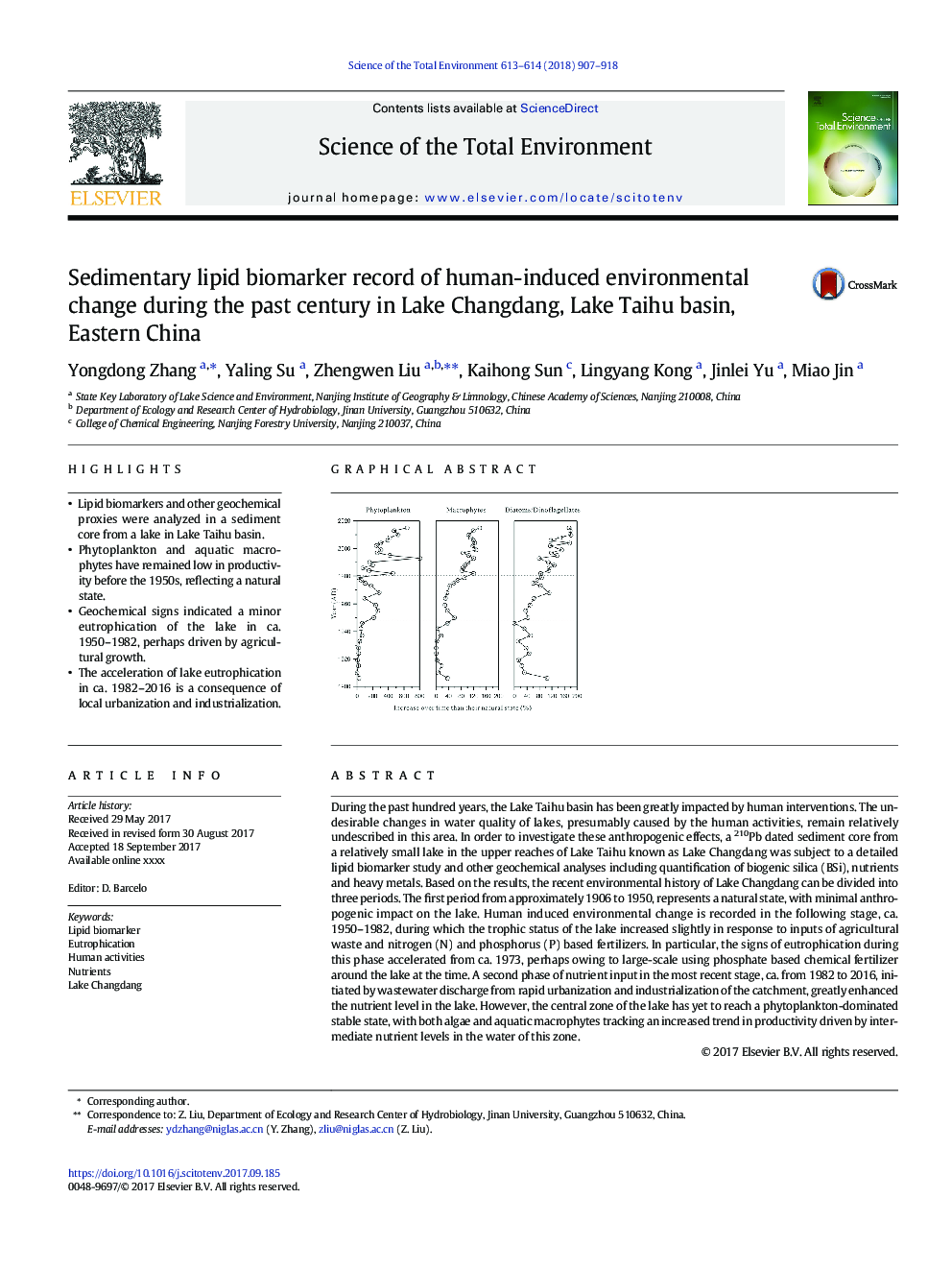| کد مقاله | کد نشریه | سال انتشار | مقاله انگلیسی | نسخه تمام متن |
|---|---|---|---|---|
| 5750153 | 1619690 | 2018 | 12 صفحه PDF | دانلود رایگان |

- Lipid biomarkers and other geochemical proxies were analyzed in a sediment core from a lake in Lake Taihu basin.
- Phytoplankton and aquatic macrophytes have remained low in productivity before the 1950s, reflecting a natural state.
- Geochemical signs indicated a minor eutrophication of the lake in ca. 1950-1982, perhaps driven by agricultural growth.
- The acceleration of lake eutrophication in ca. 1982-2016 is a consequence of local urbanization and industrialization.
During the past hundred years, the Lake Taihu basin has been greatly impacted by human interventions. The undesirable changes in water quality of lakes, presumably caused by the human activities, remain relatively undescribed in this area. In order to investigate these anthropogenic effects, a 210Pb dated sediment core from a relatively small lake in the upper reaches of Lake Taihu known as Lake Changdang was subject to a detailed lipid biomarker study and other geochemical analyses including quantification of biogenic silica (BSi), nutrients and heavy metals. Based on the results, the recent environmental history of Lake Changdang can be divided into three periods. The first period from approximately 1906 to 1950, represents a natural state, with minimal anthropogenic impact on the lake. Human induced environmental change is recorded in the following stage, ca. 1950-1982, during which the trophic status of the lake increased slightly in response to inputs of agricultural waste and nitrogen (N) and phosphorus (P) based fertilizers. In particular, the signs of eutrophication during this phase accelerated from ca. 1973, perhaps owing to large-scale using phosphate based chemical fertilizer around the lake at the time. A second phase of nutrient input in the most recent stage, ca. from 1982 to 2016, initiated by wastewater discharge from rapid urbanization and industrialization of the catchment, greatly enhanced the nutrient level in the lake. However, the central zone of the lake has yet to reach a phytoplankton-dominated stable state, with both algae and aquatic macrophytes tracking an increased trend in productivity driven by intermediate nutrient levels in the water of this zone.
127
Journal: Science of The Total Environment - Volumes 613â614, 1 February 2018, Pages 907-918